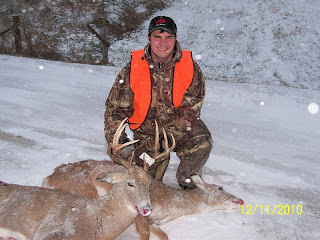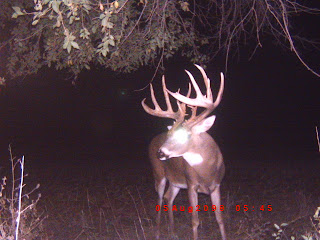Once again another deer season has come and gone. People spent countless hours in the woods trying to finally catch up to that giant whitetail and either succeeded or had to eat a "tag sandwich" once again. This year I was very lucky - taking a nice ten pointer in Kansas and a nice management eight pointer in Iowa
 |
| Non-typical 6 point side found along a corn field edge |
After deer season has passed, the first thing I do is put out trail cameras immediately before deer shed their antlers to see who all survived the gun seasons. After the cameras are out I wait until mid February and begin looking for shed antlers. Shed antlers are one of the most intriguing things to me. I love finding the antlers and seeing some of the interesting character in some of them. Another reason I enjoy finding sheds is because it can help tell you where that buck is obviously roaming during the late season.
Often times a bedding area is a very productive place to look for sheds. It’s even possible that there may be more than one shed in a bedding area! Several other places to look would be along fence crossings where the deer jump over - it will tend to knock the antlers loose; the same goes with creek crossings. So next time you are out looking for sheds just walk along fence lines and creeks and you might be surprised. My personal favorite place to look is along food sources. A lot of the time if it is a row crop I will walk the field edges and frequently I will come out with something. Another benefit with food sources is if it a field like cut beans, or winter wheat, you can take a pair of binoculars or a spotting scope and just look over the field with out getting your feet dirty. I found several last year in winter wheat fields just while driving along the highway! Often times a deer will drop both antlers within approximately 200 yards of each other. The last place I would suggest for you that goes back to the bedding areas – look along south facing slopes. This is a great location where deer often bed to sun bathe and stay warm.  |
| ^ 147 0/8" matching 6x6 typical set found near a bedding area |











